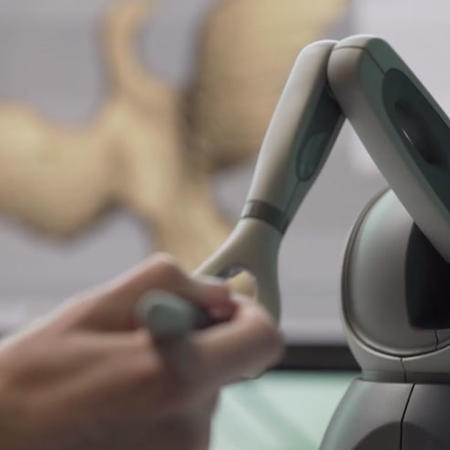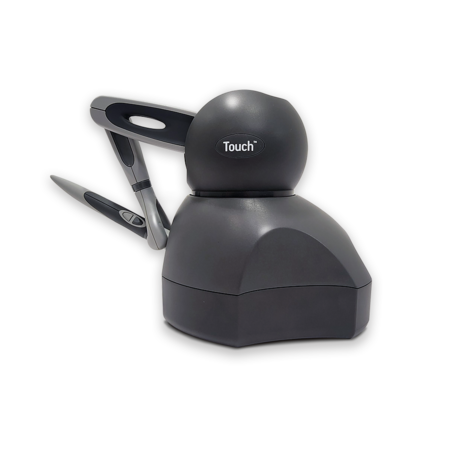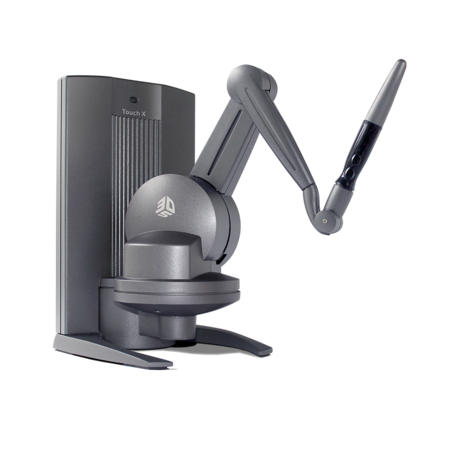Geomagic FreeForm has helped RJ Studios decrease lead time to market by 20%. RJ Studios is a product development service company of about 30 artists, mechanical engineers, and manufacturers, noted for its ability to take an animated license property, sculpt it in 3D, insert an engineered mechanism into it and then mass produce it. Among its customers are Mattel and Fisher-Price Brands.
“That may nicely summarize what we do,” says Muggs Ferguson, Director of New Technology at RJ Studios, “but we’re really in the time business. Saving time for our customers is always our biggest concern.” That passion for saving time is one of the reasons the FreeForm modeling system is an ideal solution for RJ Studios. Consider how they used to do things:
The Seven-Percent Problem…
It takes an RJ Studios sculptor 60-80 hours to sculpt an organically-shaped model, for example, a licensed cartoon character, in wax. If all goes well, the Licensor who commissioned RJ Studios likes the model and approves it for production. Of course, to accommodate for shrinkage and the other vagaries of production, the production model needs to be slightly larger than the original wax model. Seven percent larger is a typical figure for rotomolding production. It used to be that RJ Studios had only one option as to what to do next: They would have their sculptor sculpt the model again, making sure that each feature, each detail, each nuance of the new model was precisely and uniformly 7% larger than the original. The re-sculpt took about the same amount of time as the original, 60–80 hours. Then, of course, the Licensor had to examine the enlarged sculpt and approve it again.
…and the Seven-Percent Solution
Things changed for RJ Studios when they added Geomagic FreeForm to their workflow. FreeForm is a digital sculpting and modeling system by 3D Systems. And while it gives you all the advantages of modeling with clay—including the ability to actually feel the model you’re working on— it also gives you all the advantages of being digital. “It gives us the essential digital tools we need...It’s a big part of our future.” Tony Rogers, President of RJ Studios.
So now, when their Licensor approves the original model, RJ Studios just scans it, brings it into FreeForm and, just a few keystrokes later, (which takes considerably less than 60–80 hours, by the way) they have a digital model that is exactly 7% larger than the original. And because the new model is a digital clone of the original, the Licensor doesn’t have to approve it again.
As Tony Rogers, President of RJ Studios, puts it: “FreeForm takes the costly and time-consuming need to re-sculpt out of the picture.”
Going with the Flow—Integrating with CAD
With Geomagic FreeForm, RJ Studios can now place a model into the digital downstream workflow in three ways: by scanning a wax model, by creating a model in a CAD package, and by sculpting a model from scratch in FreeForm itself. Regardless of how the model becomes digital, though, RJ Studios uses FreeForm for what Ferguson calls a “compelling capability”: adding sculptural detail to CAD models. Here’s how they do it:
1) Export Interior and Exterior Surfaces
RJ Studios surfaces the model in FreeForm. One trick Ferguson has learned is to prepare the makings of a shell: He surfaces the outside of the model and saves that as an IGES file, which can be read by CAD packages. Then he offsets all but a small spot of the model, surfaces that smaller model and saves that file as an IGES file as well. That results in two files that will represent the outside and inside surfaces of the model.
2) Use the Cavity Feature in SOLIDWORKS® to Create a Shell
Ferguson opens these files in SOLIDWORKS and uses its Cavity feature to combine the two surfaces and create the shell.
3) Engineer the Inside of the Shell
He designs engineering elements and mechanical parts inside the shell. The model is now ready for prototyping or production. Before they added FreeForm to the workflow, RJ Studios found it impossible to create complex, detailed shells using only CAD packages.
“Being able to export from FreeForm into SolidWorks,” says Tony Rogers, “is huge.” And it’s not just the FreeForm success with downstream workflow that’s got these model makers excited. “I want to have my sculptors use the FreeForm system from scratch, from the very beginning of the design process,” says Ferguson.


